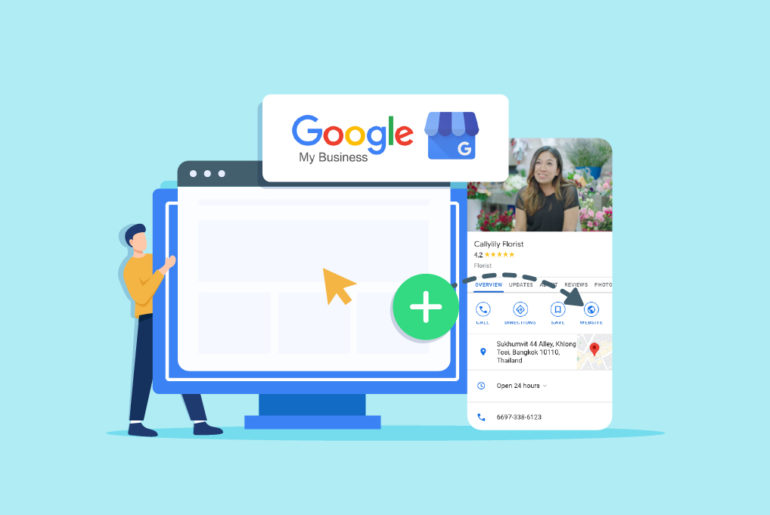If you have been running lead generation campaigns for some time, you probably know that generating leads is simply not enough. You’ll have to follow up closely with your leads before converting them into customers, as most people usually don’t convert in the first interaction. This shows the importance of lead nurturing, a process that helps you keep your leads engaged throughout their buying journey.
Lead nurturing helps ensure you’re not wasting your sales-focused efforts on leads that aren’t sales-ready yet. It’s not quite about converting leads, but keeping them warm and engaged until they decide to make a purchase. After all, prematurely forcing a lead to buy may just push them away.
However, the manual process of lead nurturing is tedious and involves engaging with leads at different times through different channels. So why not automate it to make it more efficient and easier to manage?
In this article, we discuss automated lead nurturing and how it can be a game-changer for small businesses looking to streamline their lead nurturing efforts and achieve better results.
Table of Contents
What is Automated Lead Nurturing?
Understanding the “keep warm” aspect of Lead Nurturing
What type of content is best for Lead Nurturing?
How to set up Automated Lead Nurturing
How to monitor and optimise Automated Lead Nurturing
Conclusion
What is Automated Lead Nurturing?
Lead nurturing is the process of developing and maintaining relationships with your leads to guide them properly through the buyer’s journey, from initial awareness of a product or service to eventual purchase. Automated lead nurturing simply refers to using tools (usually software) to do this automatically for you.
Automated lead nurturing uses software to deliver personalised content to leads based on their behaviour and interests. Unlike traditional lead nurturing techniques, which can be time-consuming and require a lot of manual effort, automated lead nurturing allows you to cover more leads with less effort in a shorter period of time.
Some of the benefits of using automated lead nurturing include increased efficiency, better engagement with your leads, and higher conversion rates.
Understanding the “keep warm” aspect of Lead Nurturing
Keeping leads warm means keeping your leads engaged and interested in your brand throughout their buying journey, especially before they’re ready to purchase. By delivering relevant and timely content to your leads, you can keep them interested in your products and services and build trust.
It’s no longer enough to simply capture leads and hope they’ll eventually convert into paying customers. Instead, you need to actively engage your leads throughout the buying journey to build relationships and increase the chances of conversion.
The “keep warm” phase refers to the period between when a lead is first captured and when they are ready to make a purchase decision. During this time, it’s important to keep them interested in your brand because there are plenty of other options they can explore in the market.
You can keep your leads warm by delivering relevant and timely content that speaks to their specific needs and interests through various strategies, such as email marketing, social media engagement, and personalised content marketing. Automated lead nurturing allows you to deliver personalised content at the right time and in the right context.
What type of content is best for Lead Nurturing?
The main goal of lead nurturing is to educate and inform potential customers about their problem and how your product or service can solve it without pushing for a sale. The best type of content for lead nurturing includes information that addresses the problems of your potential customers. They can be anything ranging from blog posts and social media posts to short videos and infographics.
Understanding your customers, along with their considerations and pain points, is crucial to creating content that nurtures leads in the best way. If you have a dedicated content team, you can stay in contact with leads through weekly content, such as short posts, how-to videos, and long form articles. However, this doesn’t mean you’re out of options if you have limited resources. You can still share content that is generally useful across your audience base.
How to set up Automated Lead Nurturing
The first step in setting up automated lead nurturing is to determine what platform you will use. Some CRMs and marketing automation platforms come with built-in lead nurturing capabilities, while others may require a separate tool or integration. Look for a platform that allows you to create workflows that guide leads towards conversion over time.
Once you have your platform set up, it’s time to design your workflows. Consider the different stages of the buyer’s journey and how you can use a series of automated emails and other content to guide leads through each stage. For example, you may want to send a welcome email to new leads, followed by a series of educational emails that address their most important issues and demonstrate how your product or service can solve their problems. As leads move closer to a conversion, you can send more targeted promotional content.
A common method for automated lead nurturing is to use an email marketing automation tool like MailChimp or HubSpot. These tools allow you to schedule monthly newsletters covering specific themes or topics of interest to your target audience. You can also set up triggers based on lead behaviour, such as whether they have opened an email or visited a specific page on your website, to send more targeted content and offers.
But what if your leads are not using email? For instance, what if your target audience is mostly on WhatsApp (as most leads are these days)? In this case, you may not be able to automate lead nurturing via email, but you can send them content at scale through mobile-first tools like Privyr.
How to monitor and optimise Automated Lead Nurturing
Automating lead nurturing definitely helps you build relationships with potential customers and drive conversions by streamlining your efforts. However, simply setting up automated workflows is not enough. It’s crucial to monitor and optimise the process to ensure that it’s effective, and at the same time, not overwhelming or alienating your leads.
The first step is making sure there is still a human touch involved. While automation can be incredibly efficient, it’s important to regularly review the content and messaging being sent to leads to ensure it’s relevant, helpful, and not overwhelming. Striking a balance between automation and personalization is crucial.
Once you ensure your lead nurturing process is balanced, you should monitor specific metrics such as open rates, click-through rates, and conversion rates. By monitoring these metrics, you can identify any issues and make changes to improve the effectiveness of your workflows.
One common issue with automated lead nurturing is sending too many emails or irrelevant content to leads. This can turn off potential customers and hurt your process. Regularly evaluating the content and frequency of emails being sent can help you ensure that you’re not overwhelming your leads with too much information.
Additionally, the type of content you use in your automated workflows can also impact the effectiveness of your lead nurturing process. Consider whether long, comprehensive emails covering multiple topics or short, focused emails on one theme are more effective for your audience. Ultimately, the goal is to provide value to leads and build a relationship that will ultimately drive conversions.
Conclusion
Effective implementation of automated lead nurturing can revolutionise the way you engage with your leads. By nurturing your leads with personalised and relevant content, you can create a relationship of trust and loyalty that will keep them coming back for more. Not only that, engaged leads are also much more likely to convert into paying customers.
It’s important to remember that not all leads are ready to buy right away. Pushing everyone to make a purchase immediately can actually create the opposite effect and drive potential customers away. Instead, nurturing your leads over time and providing them with valuable information and resources can keep them interested and engaged until they’re ready to make a purchase.
Keep a close eye on your leads and look for signals that hint they’re ready to move further down the funnel. This could be anything from asking questions to directly contacting you for more information. Once you see these signals, you can adjust your approach and provide even more personalised and targeted content to help them make a decision.
Finally, don’t forget to keep experimenting and optimising your automated lead nurturing process over time. By continually testing and refining your approach, you can ensure that you’re providing the most effective and engaging content possible, maximising your chances of converting leads into customers.
If you’re a small business looking to run your entire process on your smartphone, try Privyr for free to automate your lead nurturing. It’s a mobile-first platform that can automate your lead nurturing process on popular messaging apps such as WhatsApp, iMessage, and SMS.






